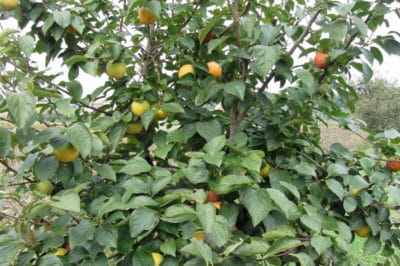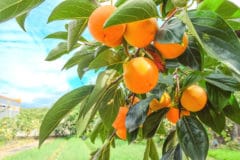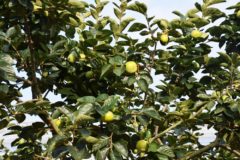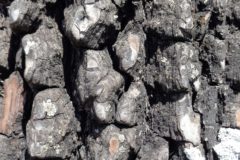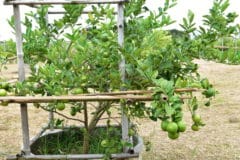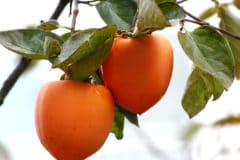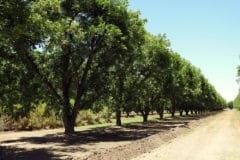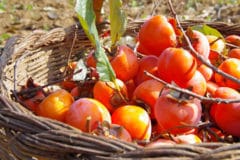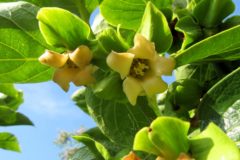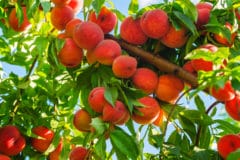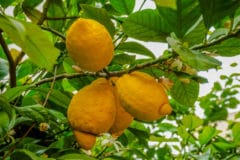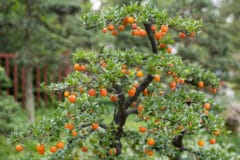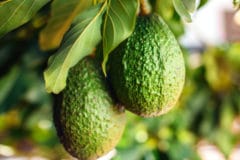Persimmons and USDA Zones
Most widely available Oriental persimmon cultivars grow in USDA plant hardiness zones 7 through 9 or 10. A handful are hardy to zone 6. They thrive where winters are moderately cold and summers relatively mild.
Planting Site
Oriental persimmons perform best with:
- A well-draining site with no low spots where water pools for long periods.
- Sandy loam soil with a pH between 6.0 and 7.0.
- Six or more hours of daily sun.
Expert gardener’s tip: Choose a site where you can maintain a 4-foot, weed-free zone around each tree. Weeds complete for soil nutrients, water and sun.
In year one, water Oriental persimmons in light, sandy soil twice weekly and those in heavier soil once per week. Provide established trees at least 1 inch of weekly water, with more during long dry spells. That’s 6 gallons (22.7 liters) per 10 square feet of soil.
Water slowly and deeply to soak all the roots.
Fertilizer
Fertilize first- and second-year trees three times annually with a balanced, slow-release 10-10-10 fertilizer:
- In USDA zones 8 through 10, fertilize in late February, late May and early August.
- In zones 6 or 7, fertilize in March or after their spring bud break and again in late May and early August.
From the third year on, feed yearly with low (less than 5 percent) nitrogen fertilizer. Fertilize during February in zones 8 through 10 and March in zones 6 or 7.
Starting 5 inches from the trunks, scatter the granules evenly to the canopies’ edges. Rake it in and water.
Expert gardener’s tip: Apply the fertilizer at the label’s recommended rate. Too much nitrogen causes fruit drop by stimulating leaf growth at the cost of the developing fruit.
Pruning
Between December and February, prune fourth-year trees to create five or six scaffold branches spiraling around the trunk at a 45 degree angle. Space them 1 vertical foot apart, with the lowest to 1 1/2 feet from the ground.
Prune fruit-bearing trees to remove:
- Branches below the lowest scaffold branch.
- All but two or three secondary branches on each scaffold branch.
- All damaged, diseased or crossing limbs.
Remove the growth evenly so the trees stay balanced.
Thinning
Brittle Oriental persimmon branches often break under a heavy fruit load. To prevent this, thin the young, green fruit to 6 inches apart between four and six weeks after the flowers peak in spring.
